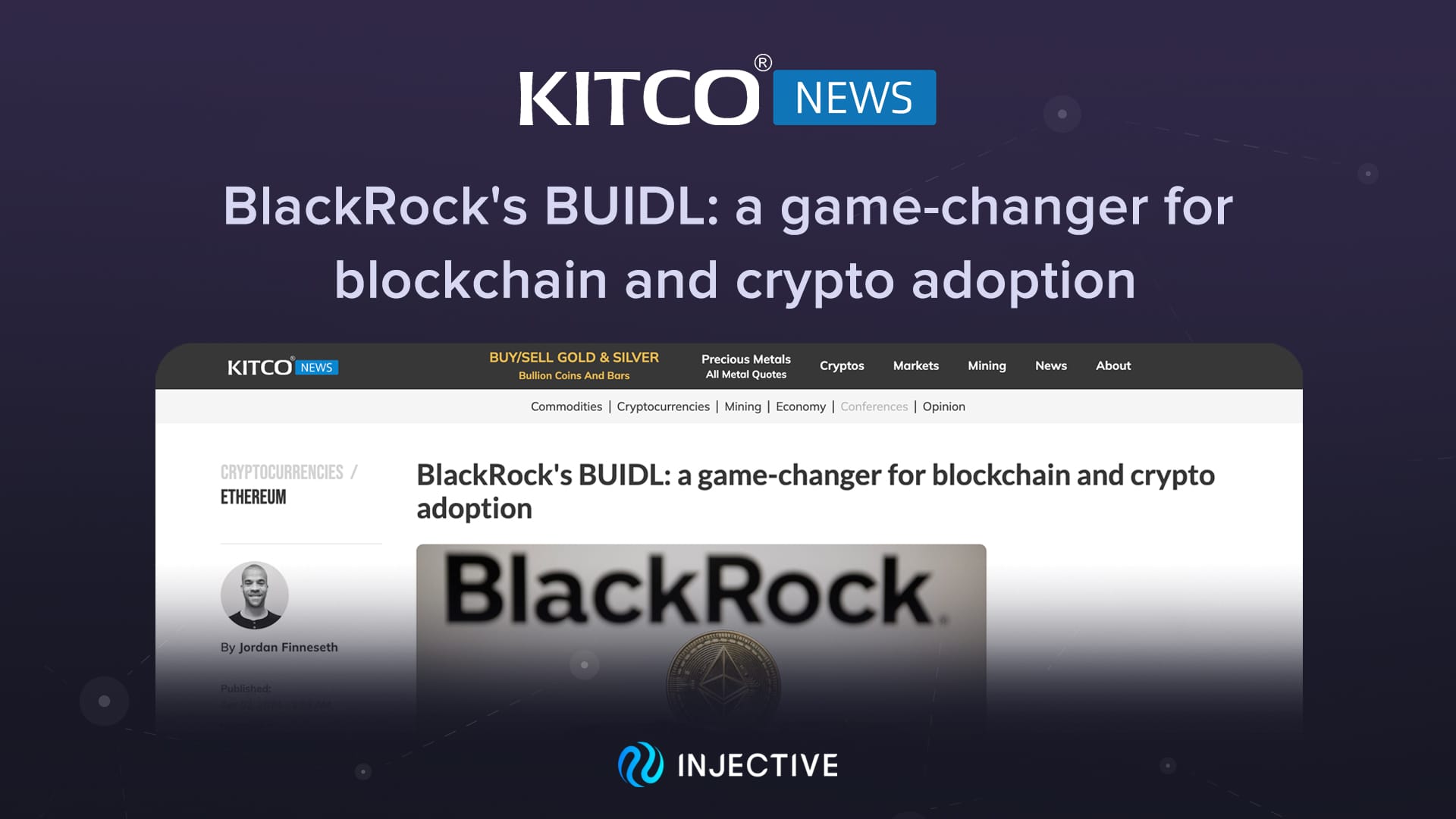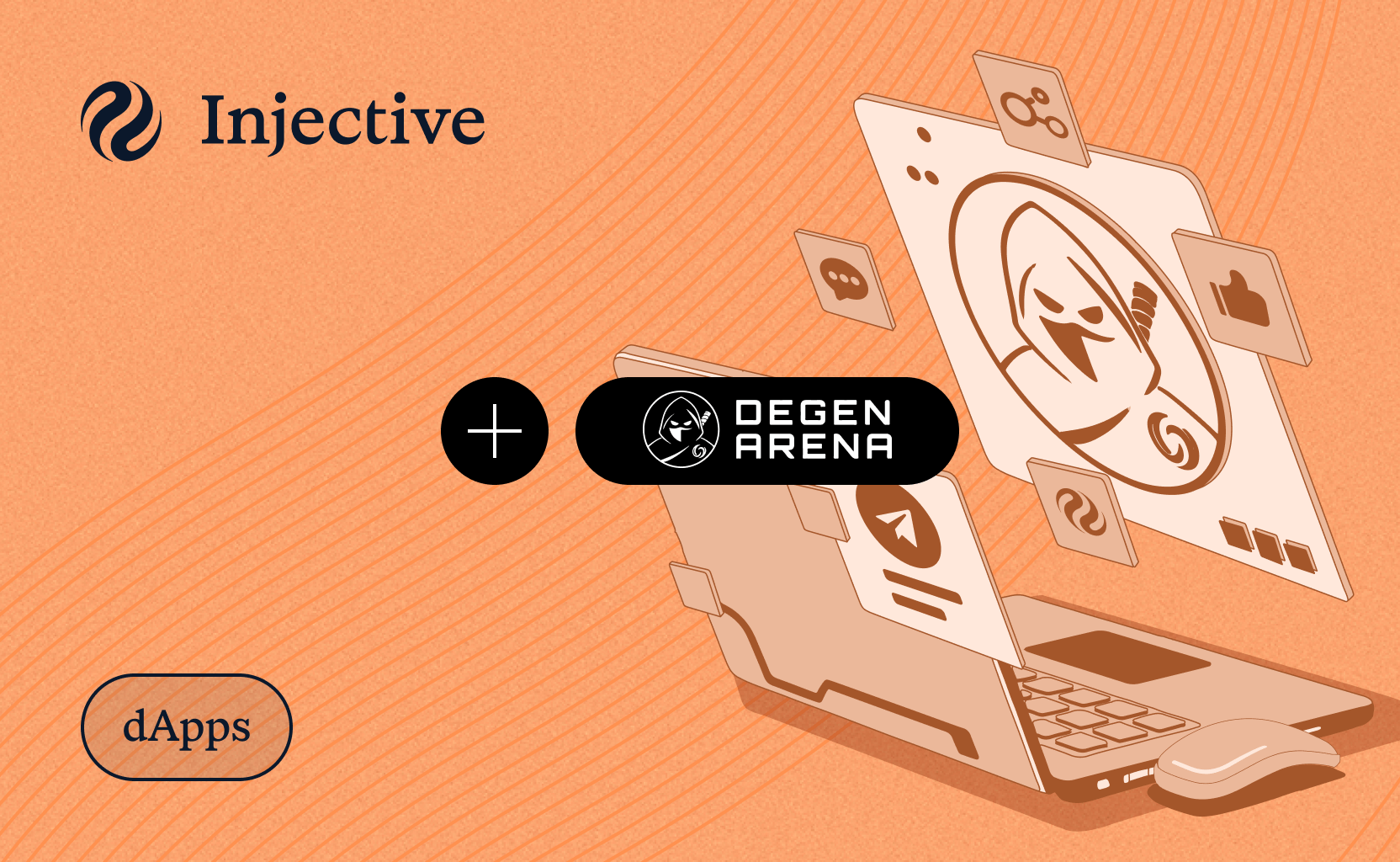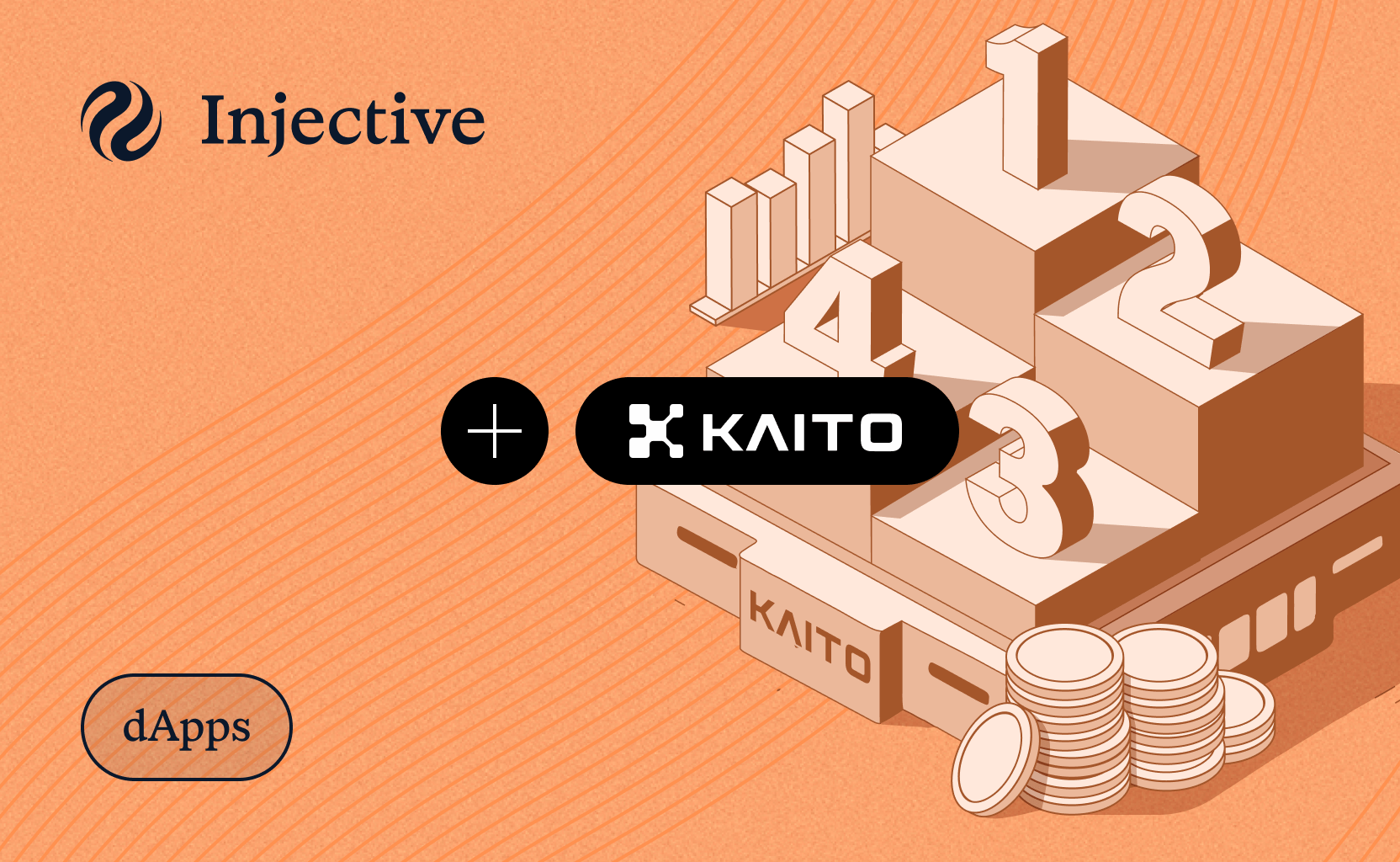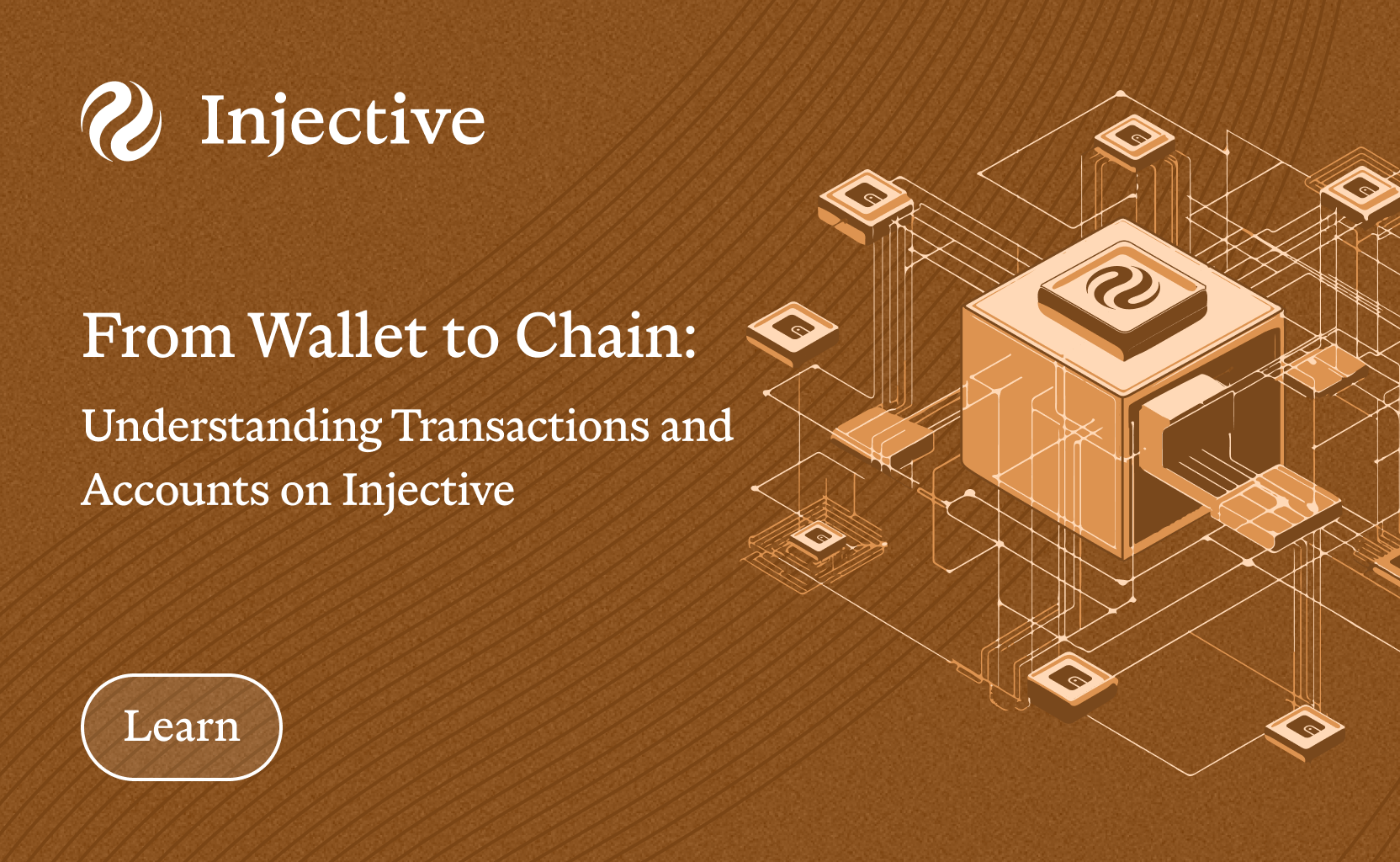By Jordan Finneseth
(Kitco News) – BlackRock has emerged as a driving force behind the institutional adoption of blockchain technology and cryptocurrencies as it boasts the most successful spot Bitcoin (BTC) ETF out of the 11 on the U.S. market. But the world’s largest asset manager has also launched the BlackRock USD Institutional Digital Liquidity Fund (BUIDL) – its first tokenized fund on the Ethereum (ETH) network.
While the launch of spot BTC ETFs was extensively covered across financial news channels and continues to be a point of focus for analysts, the launch of BUIDL went somewhat under the radar for many despite its significant development ramifications.
To gain a better understanding of what the launch of BUIDL means for the crypto ecosystem at large, Kitco Crypto reached out to several experts in the field to find out how this could shape the future of crypto moving forward.
"While headlines in mainstream media chase the potential splash of a spot ETH ETF, a quieter development with regards to the BlackRock USD Institutional Digital Liquidity Fund might hold even greater significance for the long-term health of the crypto ecosystem,” said Jeff Owens, co-founder of Haven1. “It’s not a flashy, retail-focussed product. Instead, it represents a major institutional player, BlackRock, dipping its toes into crypto, which could be the key to unlocking vast pools of institutional capital.”
He said the impact that BUIDL could have on the market “goes beyond just money.”
“The fund’s focus on ‘institutional digital liquidity’ suggests that BlackRock sees a bigger role for blockchain technology in the massive $26 trillion US Treasuries market,” Owens said. “This could pave the way for innovative applications of blockchain in areas like settlement, record-keeping, and even potential new financial instruments.”
He called the decision to launch on Ethereum “perhaps one of the greatest votes of confidence” in the network thus far. “It clearly shows the extent of institutional interest in real-world asset tokenization, and the fact that BlackRock chose Ethereum for this launch paves the way for it to become a preferred choice for institutional on-chain finance."
"We are likely to see more and more institutions vying for a piece of the tokenization pie,” he added. “Many banking and investment giants, like JPMorgan, Citi, and Franklin Templeton, are already experimenting with RWA tokenization. However, competition is fierce, and institutions may focus on developing unique on-chain products within their own niches.”
Owens sees the launch of BUIDL as helping to advance the broader goal of mass blockchain adoption.
“The BUIDL fund could certainly catalyze the mass adoption of on-chain finance,” he said. “Once institutions commit capital, mass adoption typically follows. But it will likely take more time to make a real impact than the Bitcoin spot ETF since institutions are slow-moving beasts and often need to see a long track record before committing to a new vehicle.”
Bridging the gap
“BlackRock's decision to launch a tokenized fund on Ethereum represents a significant step forward in the evolution of financial markets by creating a bridge between traditional financial markets and the rapidly growing world of cryptocurrencies,” said Peter M. Moricz, Partnerships Lead at DLC.Link. “This bridge allows for smoother interactions and transactions between the two, making it easier for large institutional investors to participate in blockchain-based financial products.”
“By bringing together firms from both sides, such as traditional financial institutions like BNY Mellon and cryptocurrency platforms like Coinbase, BlackRock's fund fosters collaboration and interoperability in the market,” he said.
Launching a tokenized fund “offers several advantages that can translate into cost savings for investors,” he added. “One major benefit is the ability to settle transactions almost instantly, 24/7, without the need for intermediaries like banks. This not only reduces transaction costs but also minimizes the risk of errors and delays. Additionally, blockchain technology provides greater transparency, allowing investors to track their investments in real-time and ensuring that fees and charges are clear and fair.”
Moricz said the launch of BUIDL “signals a growing acceptance of blockchain technology and cryptocurrencies by mainstream financial institutions and opens up new possibilities for investors and asset managers alike.”
“For investors, tokenized funds offer the potential for higher returns, increased liquidity, and greater diversification,” he said. “For asset managers, they represent a new avenue for growth and innovation, with the opportunity to create novel investment products and tap into new markets. Overall, BlackRock's initiative is not just about one fund, it's about embracing a new paradigm in finance that promises to revolutionize the way we invest and manage assets.”
Opening the tokenization floodgates
Chris Cheung, a partner at the digital asset ecosystem-focused fund 10SQ, suggested that “Trillions in assets are likely to be tokenized in the coming years,” and BUIDL is but the first step in that process.
“This includes both financial assets and non-financial assets,” he said. “For financial assets, tokenization will allow for instant settlement vs. the several days required now and will also massively reduce the fees charged by middlemen in a transaction.”
“Additionally, non-financial objects will also be tokenized with digital twins. Items can range from creating a digital twin of an airplane engine to a tokenized sneaker,” Cheung said. “A digital twin for an engine can allow for testing simulations and a record of maintenance while a tokenized sneaker allows a user to express themselves in a game.”
Rather than a rapid change over to a new system, Cheung believes the evolution will be more gradual. “You can already see elements of the systems merging with the most recent example being asset managers such as Blackrock offering a BTC ETF,” he said. “Beyond that you have Fidelity offering custody for digital assets and funds managed by traditional asset managers being tokenized on-chain.”
“The customer base and distribution channels that traditional financial institutions have established remain very powerful,” he concluded. “I believe they will remain a prominent entry point for many investors to interact with cryptocurrency.”
Vote of confidence in blockchain technology
Mostafa Al-Mashita, co-founder of Secure Digital Markets, called the launch of BUIDL “the most powerful display of trust in the underlying technology and security that we’ve seen from institutions to date.”
“Real World Asset tokenization dwarfs the market potential of ETFs and this will be the first of many tokenized products offered by blue chip financial institutions,” he said. “The ETFs are still deservedly getting a lot of attention, but this is a huge deal and something that the industry has long been expecting. RWA tokenization is the ultimate use case and this is the first example deployed at scale and by one of the world's most reputable issuers.”
He added that while BUIDL “isn’t as flashy as the spot BTC ETFs, it represents a mature step forward and a huge vote of confidence” in Ethereum.
“For BlackRock to be the first mover and bring their institutional-grade assets onchain is a much more direct vote of confidence than anything else we’ve seen from institutions and Wall Street,” he said. It will likely lead to the launch of “On-chain funds, securities, debt, real estate, and any other instruments.”
“There’s a long road ahead but tokenized markets are more efficient than what we are using today and will be a huge part of the next generation of capital markets,” Al-Mashita concluded.
The launch of BUIDL is “yet another step in the integration of decentralized finance and traditional finance from the perspective of an alternative investment,” said Robert Quartly-Janeiro, chief strategy officer at Bitrue. “Most steps that BlackRock takes will be looked at by competitors as something they should replicate themselves to keep up.”
“For the largest institutional investment firms around the world – the Vanguards, Caixa, HSBC, State Street, etc – many have announced plans or are investing,” he added. “In a broader sense, the question for digital asset natives will be ‘Do you want this?’ Especially noting that for so long the anti-establishment rhetoric and lack of direct correlation with capital markets has been used to position digital assets as an alternative.”
As for whether the launch of the fund represents a step towards the mass adoption of crypto, Quartly-Janeiro noted that “450 million people are already using digital assets, and the largest asset managers and a decent number of the biggest countries in the world have adopted some form of digital assets,” and asked if this is not already indicative of mass adoption.
“If you’re thinking about the remaining 3-4 billion people who may realistically be in a position to use digital assets, then there’s much more work to do before they adopt it, including building trust, increasing transparency, removing jargon, education, increasing accessibility, and removing complexity, amongst many other issues,” he concluded.
Increased legitimacy
Gracy Chen, Managing Director of Bitget, said the launch of BUIDL “enhances the legitimacy and stability of the crypto space and encourages other institutional investors to consider cryptocurrency investments.”
“By launching a fund on the Ethereum network, BlackRock is not just making a preliminary attempt at digital assets, but investing in the infrastructure of the crypto world,” she said. “As a leading platform for decentralized applications and smart contracts, Ethereum has increased its visibility and potential adoption. This could accelerate Ethereum's growth and further consolidate its position in the market.”
“BlackRock's launch of its BUIDL fund on the Ethereum network is a multi-faceted support for Ethereum's technology, market position, and future growth potential,” she added. “This support may have a chain reaction, enhance the confidence of other investors, and may lead to wider adoption and innovation within the Ethereum ecosystem.”
Chen said BlackRock’s activities could also “increase the confidence of retail and institutional investors.”
“Knowing that a major Financial Institution is involved may reduce the risk perception associated with digital assets,” she said. “In addition, focusing on ‘BUIDL’ funds, which may support the establishment of projects on the Ethereum network, can stimulate innovation and development within the ecosystem, leading to new applications and use cases of blockchain.”
“Institutional involvement of this scale can also affect the way cryptocurrencies are regulated,” Chen added. “With big players like BlackRock entering the space, regulators are likely to accelerate the development of frameworks that ensure market stability and protect investors, which in turn can promote wider adoption.”
“As time goes by, BlackRock's BUIDL fund will be a milestone in the larger crypto ecosystem and its true impact, undoubtedly a milestone in the journey of digital assets entering the global financial system,” she said. “It’s an innovative move in traditional industries, similar to the unexpected popularity of BTC ETF among traditional customers. BUIDL may attract great interest and attention from traditional customers. As the first giant asset management institution to do so, BlackRock will have a certain first-mover advantage.”
It could also prompt other asset managers to offer similar products so they don’t lose clients, Chen suggested.
“For other large asset management institutions, their clients may also have similar investment needs. If they do not open a cryptocurrency fund like BlackRock's BUIDL, their clients' investment needs may not be met,” she said. “This may cause potential customer loss for them. Since BlackRock has already set a precedent, it paves the way for legal regulation for similar funds in the future, and other large regulatory agencies may follow this behavior.”
Chen said that while “The mass adoption of cryptocurrency is not achieved overnight, but is a phased and gradual process,” she thinks BUIDL marks a significant step toward that goal, and Bitget “firmly believes that the mass adoption of cryptocurrency is an unstoppable trend.”
The path to institutional adoption
Eric Chen, founder and CEO of Injective Labs, also sees the launch of BUIDL as “facilitating a notable increase in institutional adoption, which is a key factor in the crypto ecosystem's long-term success.”
“We're still in the early stages of institutional involvement in crypto and are expecting major institutional adoption,” he said. “A major TradFi player like BlackRock being involved validates the legitimacy of digital assets as valuable, liquid investments.”
“BUIDL enables regulated entities to seamlessly navigate into the realm of crypto assets, especially on established chains like Ethereum,” he added. “By facilitating access to on-chain products, it effectively opens doors for institutions to engage with a broader spectrum of digital assets, beyond the main native asset.”
Chen noted that “BlackRock is joining other reputable funds like VanEck and Franklin Templeton in leading the way with their respective ETF products,” and suggested, “This trend indicates a growing market entrance into accessing on-chain products, and we can expect to see more institutions following suit shortly.”
“Crypto is here to stay,” he said. “Each move towards integrating institutions with blockchain networks represents another step forward in the journey toward mass adoption. While it's still early days, these developments pave the way for broader audiences and greater adoption in the future.”
This article originally appeared on Kitco News.

About Injective
Injective is a lightning fast interoperable layer one blockchain optimized for building the premier Web3 finance applications. Injective provides developers with powerful plug-and-play modules for creating unmatched dApps. INJ is the native asset that powers Injective and its rapidly growing ecosystem. Injective is incubated by Binance and is backed by prominent investors such as Jump Crypto, Pantera and Mark Cuban.
Website | Telegram | Discord | Blog | Twitter | Youtube | Facebook | LinkedIn | Reddit | Instagram | Orbit Newsletter



